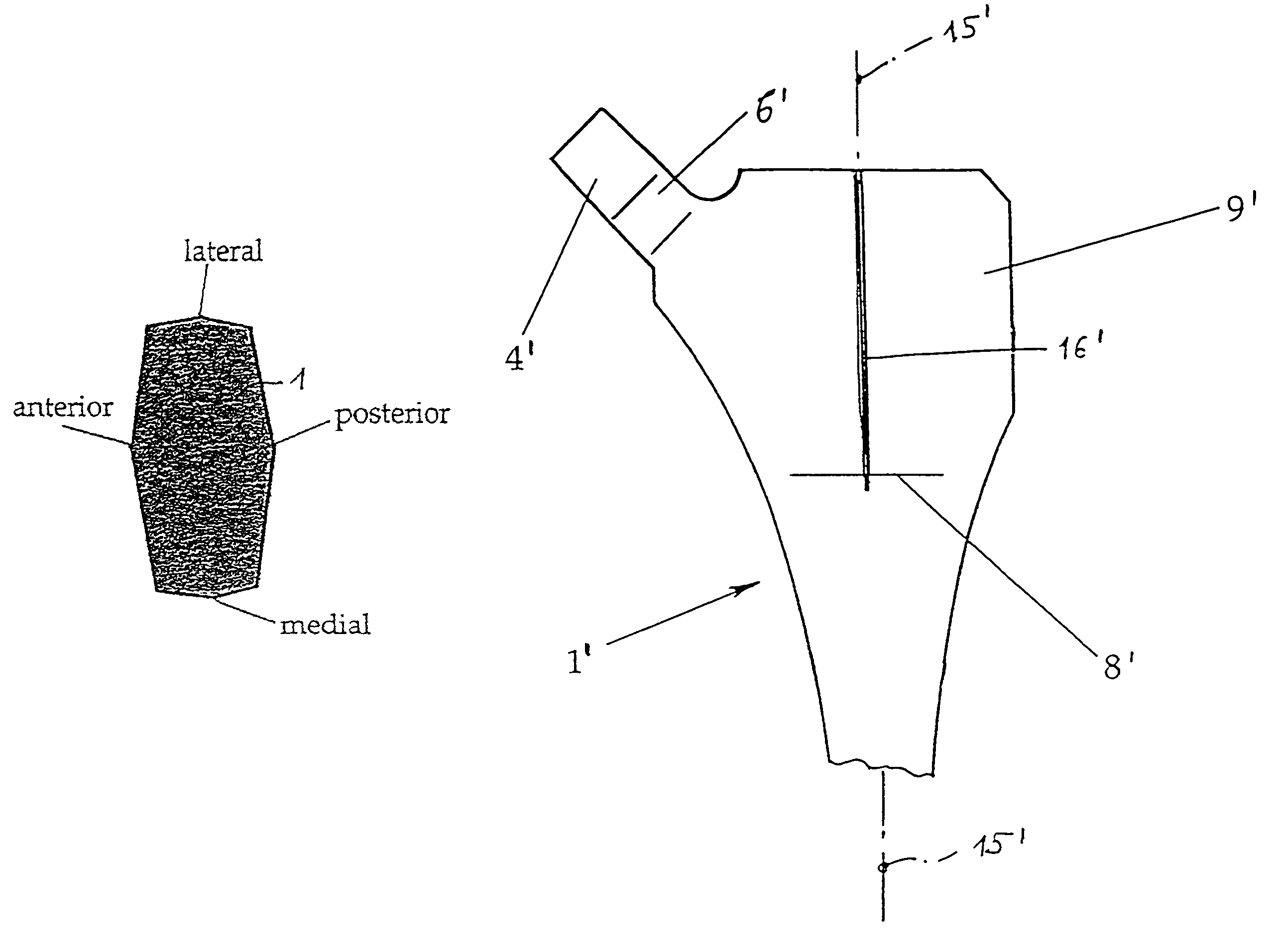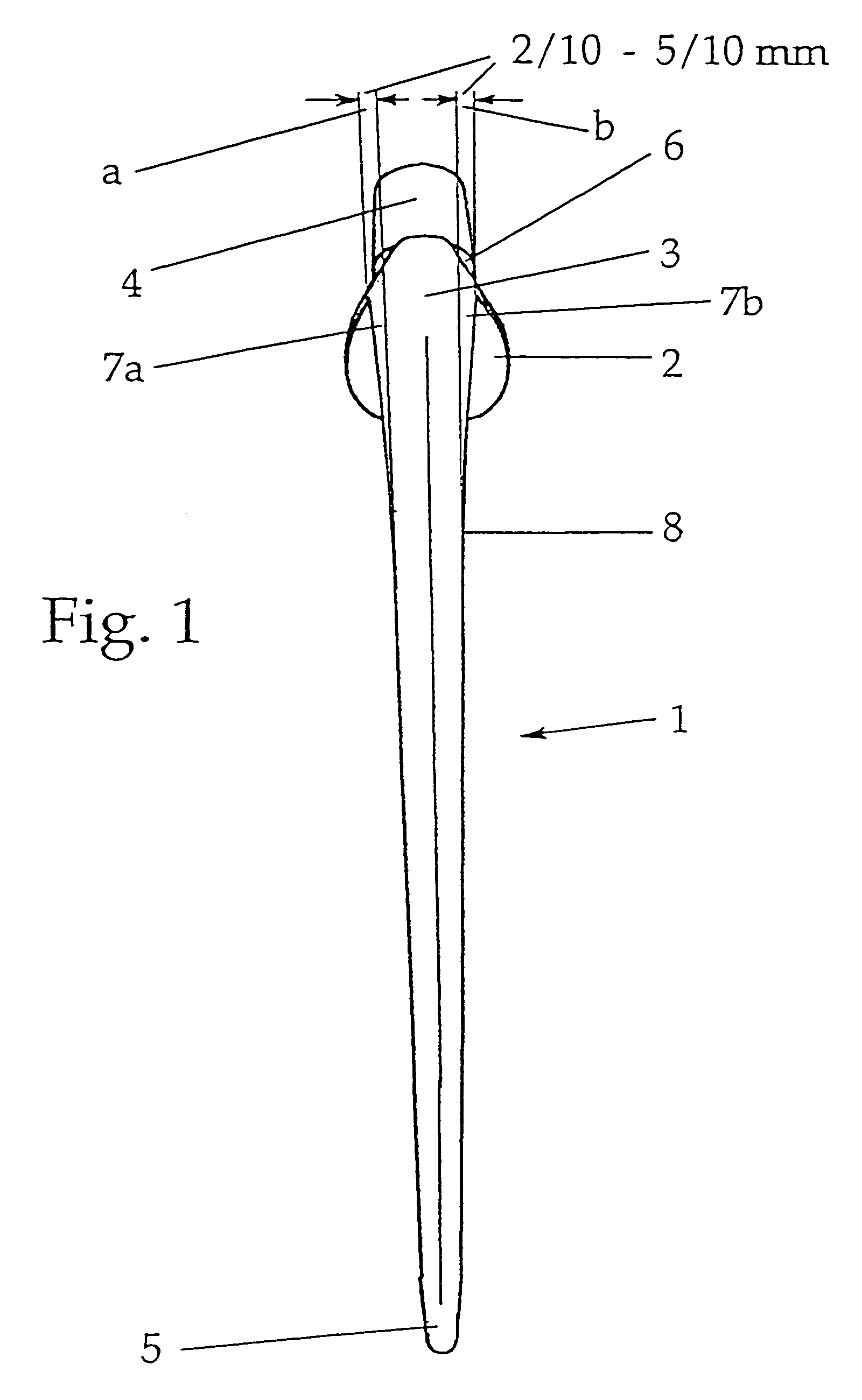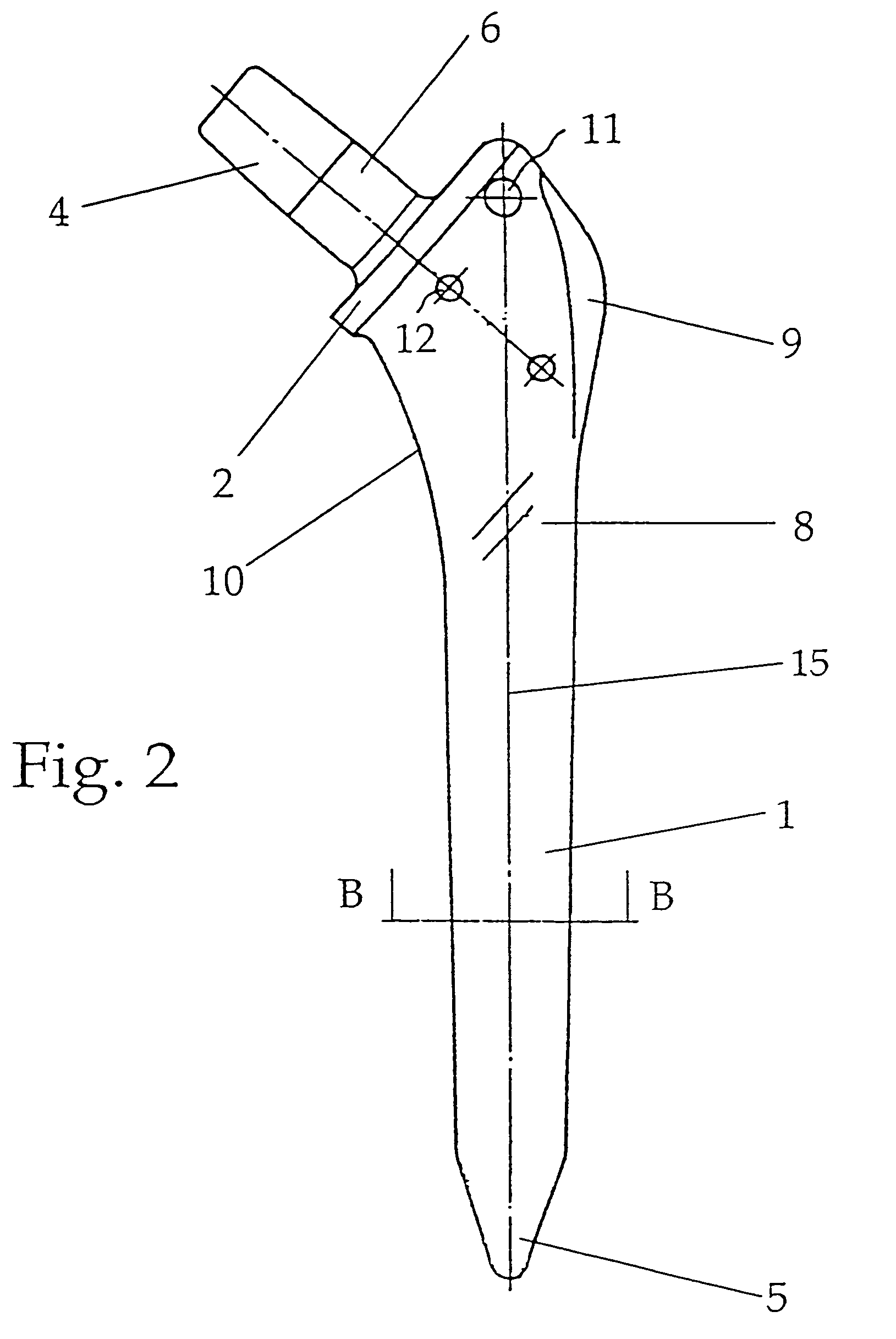Flat shaft of a hip-joint prosthesis for anchoring in the femur
a hip joint and prosthesis technology, applied in the field of hip joint prosthesis for femur anchoring, can solve problems such as the risk of fracture of the bone, and achieve the effect of better anchoring
- Summary
- Abstract
- Description
- Claims
- Application Information
AI Technical Summary
Benefits of technology
Problems solved by technology
Method used
Image
Examples
Embodiment Construction
[0028]A shaft 1 shown in FIGS. 1 and 2 serves to anchor a hip-joint prosthesis in the femur. As can be seen in FIGS. 1 and 2, the shaft expands uniformly on all sides in the proximal direction, from the distal end 5 as far as a collar-like projection 2 that separates an anchoring section of the shaft 1 from a prosthesis neck 6. As shown in FIG. 2, proximal to the “cone” the medial narrow side of the shaft is shaped like a continuously curving arch 10, which ends at the above-mentioned projection 2. The reference numeral 3 identifies an upper transition region, the numeral 9 (FIG. 2) a trochanter wing, and the numerals 11 and 12 indicate cross-bores that extend through the shaft from anterior to posterior. These bores have the function of facilitating comparison between X-rays taken at different times. They can also be used to detect a potential displacement of the shaft after it has been in place for a long time. The long axis (longitudinal central axis) of the shaft is identified i...
PUM
| Property | Measurement | Unit |
|---|---|---|
| Length | aaaaa | aaaaa |
| Fraction | aaaaa | aaaaa |
| Fraction | aaaaa | aaaaa |
Abstract
Description
Claims
Application Information
 Login to View More
Login to View More - R&D
- Intellectual Property
- Life Sciences
- Materials
- Tech Scout
- Unparalleled Data Quality
- Higher Quality Content
- 60% Fewer Hallucinations
Browse by: Latest US Patents, China's latest patents, Technical Efficacy Thesaurus, Application Domain, Technology Topic, Popular Technical Reports.
© 2025 PatSnap. All rights reserved.Legal|Privacy policy|Modern Slavery Act Transparency Statement|Sitemap|About US| Contact US: help@patsnap.com



